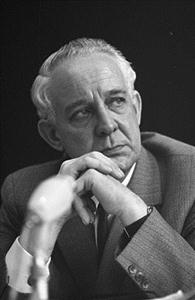Development of Dutch trade union structure
Two steps forward and one step back
Introduction

‘The quest for the ideal structure is like trying to square the circle’, Jan Mertens, from 1963-1973 president of the catholic Dutch trade union centre, once sighed. The existing structure was never ideal, the defects made themselves felt all too often, but proposals for a new structure often threw up more drawbacks than benefits. Being a pragmatist, Mertens usually went on to say: ‘If we cannot do what we should, we should do what we can.’
The trade union movement came into being as a reaction to developments in industry whereby matters of importance to workers, such as opportunities for advancement, income, social security and the quality of work, were coming under threat. Members not only wanted their trade unions to provide an alternative to the 'protection' that had been lost, but also to a greater or lesser extent to ensure that from their point of view their branch of industry developed along favourable lines. They therefore wanted not just to be followers but also to be proactive. In such a dialectical process it is impossible to remain unchanging oneself. Policy not only needs to be continuously adapted to the changes taking place, the structure itself also needs to be modified in response to structural changes affecting the sectors. This article describes developments within the Dutch trade union movement, with particular emphasis on the building and woodworking industry.
